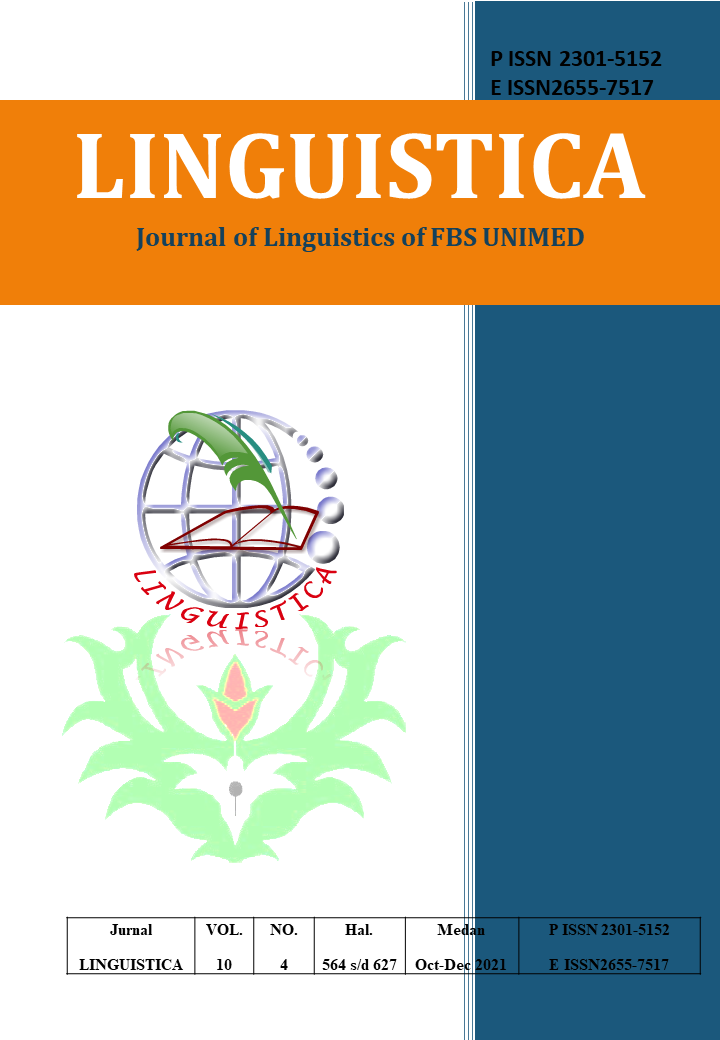LOGICO-SEMANTIC RELATIONS OF RAJA PARHATA UTTERANCES IN SAUR MATUA CEREMONY
DOI:
https://doi.org/10.24114/jalu.v10i4.31283Abstract
This study aimed to identify the types of logico-semantic relations and the use of logico-semantic relations of Raja Parhata in the Saur Matua ceremony. This study was conducted by applying the descriptive qualitative method by Flick (2009). The source of data was Raja Parhata in the Saur Matua ceremony. The result of this research was types of logico-semantic relations can be found in Raja Parhata are paratactic elaboration (44,28%), paratactic enhancement (21,42%), hypotactic elaboration (7,14%), paratactic extension (11,42%), hypotactic enhancement (12,85%), hypotactic extension (2,85%). Moreover, the realization of logico-semantic relations in Raja Parhata™s utterances mostly appears by using conjunction jadi (so), molo (if), and holani (that all), adverbial clause dungi (after that), verb baen (play), and preposition tu (to).Downloads
Published
2023-04-08
Issue
Section
Articles
License
Copyright (c) 2021 MARIATI NAINGGOLAN, MORADA TETTY, FERIYANTI ELINA GULTOM

This work is licensed under a Creative Commons Attribution-ShareAlike 4.0 International License.
Authors who publish with this journal agree to the following terms:
- Authors retain copyright and grant the journal the right of first publication with the work simultaneously licensed under a Creative Commons Attribution License that allows others to share the work with an acknowledgment of the work's authorship and initial publication in this journal.
- Authors are able to enter into separate, additional contractual arrangements for the non-exclusive distribution of the journal's published version of the work (e.g., post it to an institutional repository or publish it in a book), with an acknowledgment of its initial publication in this journal.
- Authors are permitted and encouraged to post their work online (e.g., in institutional repositories or on their website) prior to and during the submission process, as it can lead to productive exchanges, as well as earlier and greater citation of published work (See The Effect of Open Access).
- This work is licensed under a Creative Commons Attribution-ShareAlike 4.0 International License.

